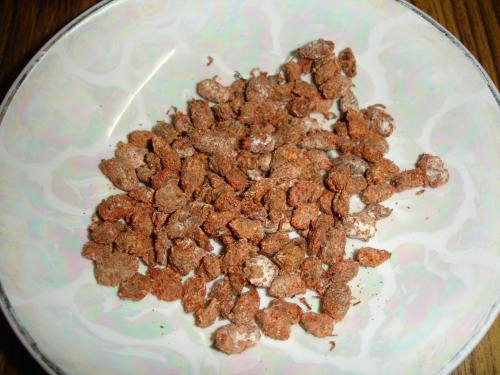|
Trombidium Hungaricum
''Trombidium hungaricum'' is a species of mites in the genus ''Trombidium'' in the family Trombidiidae. It is found in Hungary Hungary ( hu, Magyarország ) is a landlocked country in Central Europe. Spanning of the Carpathian Basin, it is bordered by Slovakia to the north, Ukraine to the northeast, Romania to the east and southeast, Serbia to the south, Croa .... References * Synopsis of the described Arachnida of the WorldTrombidiidae Further reading * (1957): Beiträge zur Trombidiidenfauna Ungarns. ''Acta Vet. Hungarica'' 7: 175-184. Trombidiidae Animals described in 1957 Arachnids of Europe {{Trombidiformes-stub ... [...More Info...] [...Related Items...] OR: [Wikipedia] [Google] [Baidu] |
Mite
Mites are small arachnids (eight-legged arthropods). Mites span two large orders of arachnids, the Acariformes and the Parasitiformes, which were historically grouped together in the subclass Acari, but genetic analysis does not show clear evidence of a close relationship. Most mites are tiny, less than in length, and have a simple, unsegmented body plan. The small size of most species makes them easily overlooked; some species live in water, many live in soil as decomposers, others live on plants, sometimes creating galls, while others again are predators or parasites. This last type includes the commercially destructive ''Varroa'' parasite of honey bees, as well as scabies mites of humans. Most species are harmless to humans, but a few are associated with allergies or may transmit diseases. The scientific discipline devoted to the study of mites is called acarology. Evolution and taxonomy The mites are not a defined taxon, but is used for two distinct groups of arachnids ... [...More Info...] [...Related Items...] OR: [Wikipedia] [Google] [Baidu] |
Trombidium
''Trombidium'' is a genus of mite with about 30 described species. Species * '' Trombidium auroraense'' Vercammen-Grandjean, Van Driesche & Gyrisco, 1977 – New York * '' Trombidium breei'' Southcott, 1986 – Europe (host: ''Agapetes galathea'', Lepidoptera) * '' Trombidium brevimanum'' (Berlese, 1910) – Europe * '' Trombidium cancelai'' (Robaux, 1967) – Spain * '' Trombidium carpaticum'' (Feider, 1950) – France, Romania * † '' Trombidium clavipes'' Koch & Berendt, 1854 – Fossil: Oligocene * '' Trombidium dacicum'' (Feider, 1950) – Poland, Romania * '' Trombidium daunium'' (Paoli, 1937) – Italy * '' Trombidium fturum'' Schweizer, 1951 – Spain, Switzerland * '' Trombidium fuornum'' Schweizer, 1951 – Poland, Switzerland, France * '' Trombidium geniculatum'' (Feider, 1955) – Spain, Romania, Poland, Norway * '' Trombidium grandissimum'' (Koch, 1867) - India * '' Trombidium heterotrichum'' (Berlese, 1910) – Europe * '' Trombidium holosericeum'' (Linnaeus, 17 ... [...More Info...] [...Related Items...] OR: [Wikipedia] [Google] [Baidu] |
Trombidiidae
Trombidiidae, also known as red velvet mites, true velvet mites, or rain bugs, are small arachnids (eight-legged arthropods) found in plant litter and are known for their bright red color. While adults are typically in length, some, such as the genus ''Dinothrombium'', may reach up to . Their life pattern is in stages similar to other members of the Prostigmata: egg, pre-larva, larva, protonymph, deutonymph, tritonymph and adult (male or female). They usually have only one breeding cycle per year.Zhang, Zhi-Qiang (1998) Biology and ecology of trombidiid mites (Acari: Trombidioidea) Experimental & Applied Acarology 22:139–15PDF/ref> They are active predators as grown adults. As early instars they are often parasites of insects and other arachnids. One well known species from Europe, Asia, and North Africa is ''Trombidium holosericeum''. The systematics of this group has been in flux and many former subfamilies of this are now raised to families within the Trombidioidea. L ... [...More Info...] [...Related Items...] OR: [Wikipedia] [Google] [Baidu] |
Hungary
Hungary ( hu, Magyarország ) is a landlocked country in Central Europe. Spanning of the Carpathian Basin, it is bordered by Slovakia to the north, Ukraine to the northeast, Romania to the east and southeast, Serbia to the south, Croatia and Slovenia to the southwest, and Austria to the west. Hungary has a population of nearly 9 million, mostly ethnic Hungarians and a significant Romani minority. Hungarian, the official language, is the world's most widely spoken Uralic language and among the few non- Indo-European languages widely spoken in Europe. Budapest is the country's capital and largest city; other major urban areas include Debrecen, Szeged, Miskolc, Pécs, and Győr. The territory of present-day Hungary has for centuries been a crossroads for various peoples, including Celts, Romans, Germanic tribes, Huns, West Slavs and the Avars. The foundation of the Hungarian state was established in the late 9th century AD with the conquest of the Carpat ... [...More Info...] [...Related Items...] OR: [Wikipedia] [Google] [Baidu] |
Animals Described In 1957
Animals are multicellular, eukaryotic organisms in the biological kingdom Animalia. With few exceptions, animals consume organic material, breathe oxygen, are able to move, can reproduce sexually, and go through an ontogenetic stage in which their body consists of a hollow sphere of cells, the blastula, during embryonic development. Over 1.5 million living animal species have been described—of which around 1 million are insects—but it has been estimated there are over 7 million animal species in total. Animals range in length from to . They have complex interactions with each other and their environments, forming intricate food webs. The scientific study of animals is known as zoology. Most living animal species are in Bilateria, a clade whose members have a bilaterally symmetric body plan. The Bilateria include the protostomes, containing animals such as nematodes, arthropods, flatworms, annelids and molluscs, and the deuterostomes, containing the echinoderms a ... [...More Info...] [...Related Items...] OR: [Wikipedia] [Google] [Baidu] |
_Lorryia_formosa_2_edit.jpg)

